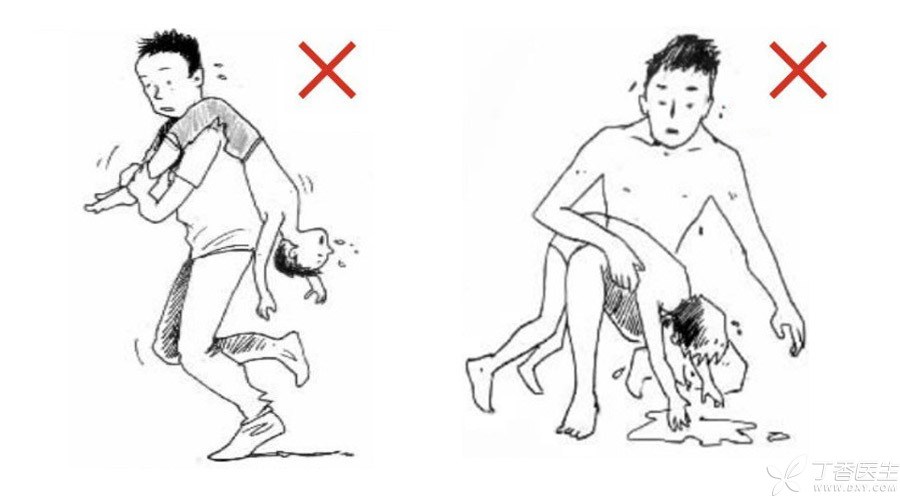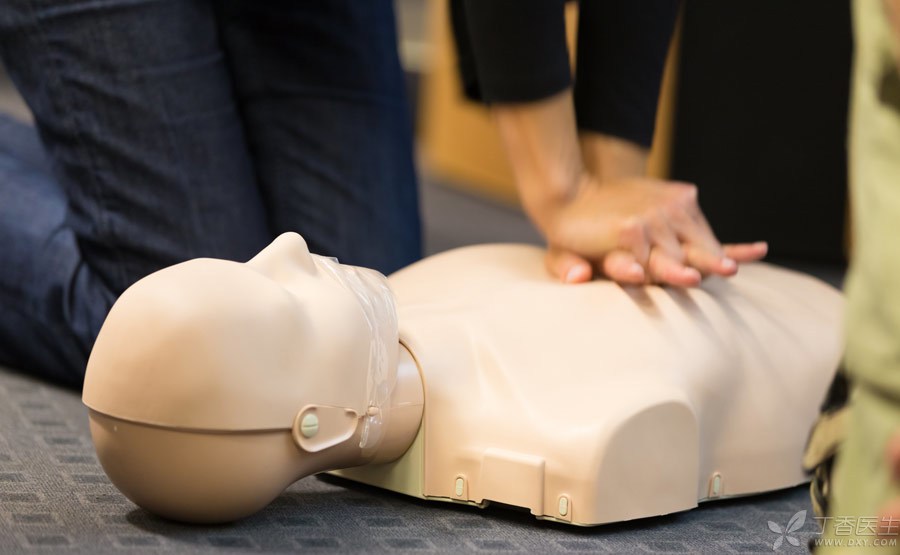Error 1: Let the baby swim
Perhaps many parents believe in some propaganda, believing that baby swimming can not only exercise the body, but also simulate [amniotic fluid environment] and help [stimulate potential].
In fact, children who are too young cannot master the skill of swimming at all, and safety is also a big problem.
It can be seen from this video that as long as parents and staff do not pay attention, infant drowning will occur in an instant.
More importantly, swimming rings are not a safe guarantee for infants who do not have the ability to save themselves, and often cause danger.
In particular, the swimming ring worn around the neck of a small baby may not only damage the weak cervical vertebra of the child, but also oppress the neck, causing danger. According to the American Academy of Pediatrics and other authoritative institutions
Therefore, Dr. Clove does not recommend that babies who are too young (under 1 year old) swim. Even older children swim, please be sure to do these three things:
- A parent must accompany the child into the water all the way, and try to keep the child’s head above the water surface and breathe smoothly. Whether going into the water or playing by the swimming pool, it is recommended to wear vest-type life jackets instead of swimming rings for children. At least one parent has learned infant cardiopulmonary resuscitation to cope with emergencies.
Error 2: [Water Control First Aid]

The so-called “water control first aid method” has a long history and is also in line with people’s intuition-drowning, choking, of course, the water must be brought out first.
As a result, various water control methods emerge one after another, such as pressing/pushing the belly hard, slapping the back fiercely, and the widely circulated [running backwards]…

In fact, if you think about it a little, you can understand that people cannot breathe after drowning. In essence, the cause of life danger is lack of oxygen, so the top priority must be to [restore oxygen supply].
The normal circulation of oxygen cannot be separated from the heart and lung, so the correct first aid method should be to restore the heart and lung function ().
If you only focus on drainage, it is easy to miss the best rescue time for cardiac arrest. Moreover, methods such as [upside down water control] not only cannot drain the water from the lungs, but also may get the food from the stomach into the trachea, further increasing the risk of blocking the respiratory tract.
In a word, any form of water control law is harmful but not beneficial, so we must not follow suit.
Error 3: First Aid Without Distinguishing the Situation

As the saying goes: When watching the food, first aid is actually the same. We have to find out the state of the drowned person before rescuing him.
Some people drowned for a short period of time, which may not be a big deal to rescue, but it may not be easy to say if people press it indiscriminately.
According to the state of the drowned person after being rescued, the corresponding first aid measures are as follows:
1. For awake, breathing and pulse people:
-
Call 120 to keep him warm and wait for rescue workers to arrive or be sent to the hospital.
2. For coma (no response to call), breathing and pulse:
- Hit 120, clean up foreign bodies in nose and mouth, lie on your side, and wait for rescue workers to arrive. Closely observe their breathing and pulse, and do cardiopulmonary resuscitation when necessary.
3. For coma, no breathing and pulse:
- At this time, only the respiratory tract needs to be opened and artificial respiration is carried out, and the pulse and heartbeat can be rapidly enhanced. After resuming breathing, the person can lie on his side and wait for the arrival of rescue personnel.
4. For people in coma, no breathing and no pulse:
- Immediately clean up the foreign body in the nose and mouth, open the respiratory tract, carry out artificial respiration and chest compressions, that is, carry out complete cardiopulmonary resuscitation first aid. At the same time, call 120 and continue cardiopulmonary resuscitation until the patient’s respiratory pulse recovers or the emergency personnel arrive.
Some people say that failure is the mother of success, but life is only once. For first aid, success is the mother of success.
In other words, no matter how urgent and loving you are, you must use the right method, otherwise you cannot save people.
From today on, let’s understand the correct method. I hope it will never be used!
- Click to Learn More Adult Cardiopulmonary Resuscitation Click to Learn More Children Cardiopulmonary Resuscitation
